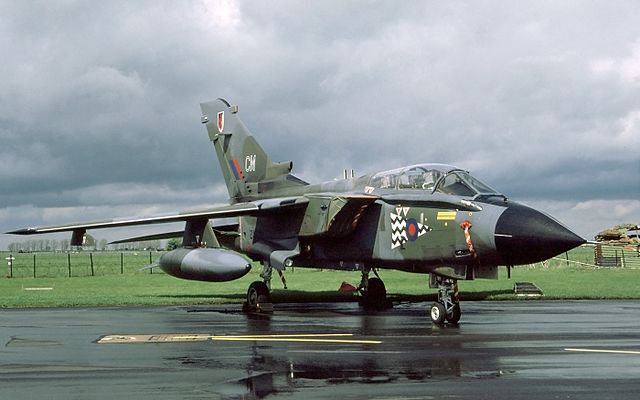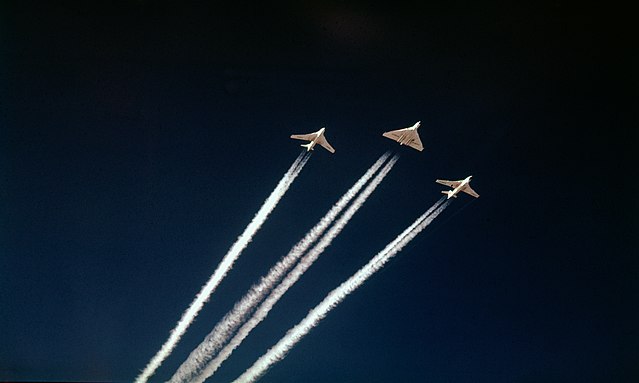Royal Air Force Brüggen, more commonly known as RAF Brüggen, in Germany was a Royal Air Force station until 15 June 2001. It was situated next to the village of Elmpt, approximately 43 kilometres (27 mi) west of Düsseldorf on the Dutch–German border. The base was named after the village of Brüggen, the nearest rail depot. Construction began in mid-1952, which involved the clearing of forest and draining of marshland. The station became active in 1953 during the rapid expansion of NATO forces in Europe.
The main paint shop situated next to the main runway was responsible for the surface finishing of all aircraft, ground equipment and RAF Regiment Rapier missile systems. In 2002, it was handed over to the British Army and renamed Javelin Barracks.
Panavia Tornado GR1 of No. 17 squadron which was based at Brüggen.
Hardened Aircraft Shelter at RAF Bruggen, 1981
The Royal Air Force (RAF) is the air and space force of the United Kingdom, British Overseas Territories and Crown Dependencies. It was formed towards the end of the First World War on 1 April 1918, becoming the first independent air force in the world, by merging the Royal Flying Corps (RFC) and the Royal Naval Air Service (RNAS). Following the Allied victory over the Central Powers in 1918, the RAF emerged as the largest air force in the world at the time. Since its formation, the RAF has played a significant role in British military history. In particular, during the Second World War, the RAF established air superiority over Hermann Göring's Luftwaffe during the Battle of Britain, and led the Allied strategic bombing effort.
A Spitfire and Hurricane, which both played major roles in the Battle of Britain.
The Avro Lancaster heavy bomber was extensively used during the strategic bombing of Germany.
The RAF V bomber force was used to carry both conventional and nuclear bombs.
The Tornado played an integral part in RAF operations from 1991 until its retirement in 2019






